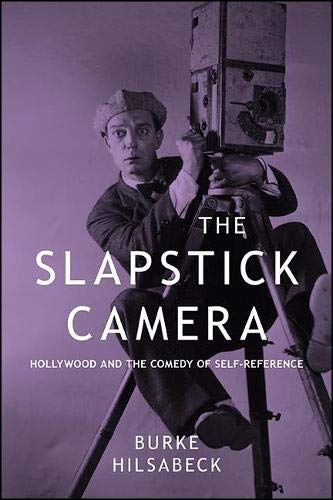
Slapstick Camera, The: Hollywood and the Comedy of Self-Reference PDF
218 Pages·2020·2.7119 MB·other
Most books are stored in the elastic cloud where traffic is expensive. For this reason, we have a limit on daily download.
Preview Slapstick Camera, The: Hollywood and the Comedy of Self-Reference
Description:
Demonstrates that slapstick film comedies display a canny and sometimes profound understanding of their medium. Slapstick film comedy may be grounded in idiocy and failure, but the genre is far more sophisticated than it initially appears. In this book, Burke Hilsabeck suggests that slapstick is often animated by a philosophical impulse to understand the cinema. He looks closely at movies and gags that represent the conditions and conventions of cinema production and demonstrates that film comedians display a canny and sometimes profound understanding of their medium—from Buster Keaton’s encounter with the film screen in Sherlock Jr. (1924) to Harpo Marx’s lip-sync turn with a phonograph in Monkey Business (1931) to Jerry Lewis’s film-on-film performance in The Errand Boy (1961). The Slapstick Camera follows the observation of philosopher Stanley Cavell that self-reference is one way in which “film exists in a state of philosophy.” By moving historically across the studio era, the book looks at a series of comedies that play with the changing technologies and economic practices behind film production and describes how comedians offered their own understanding of the nature of film and filmmaking. Hilsabeck locates the hidden intricacies of Hollywood cinema in a place where one might least expect them—the clowns, idiots, and scoundrels of slapstick comedy. “From its analysis of the vaudevillian Victorian origins to early Hollywood expressions, and from defining classical performances by the likes of Keaton to recent postmodern recapitulations, Hilsabeck’s theoretically rigorous and wide-ranging study masterfully weaves a path through the historical, technical, and philosophical art of slapstick comedy. A must for scholars working in this field.” — Daniel Varndell, author ofHollywood Remakes, Deleuze and the Grandfather Paradox
See more
The list of books you might like
Most books are stored in the elastic cloud where traffic is expensive. For this reason, we have a limit on daily download.
